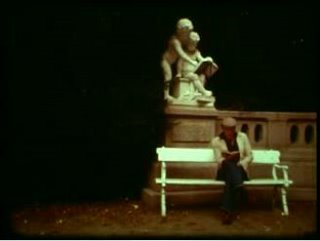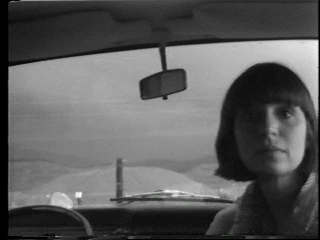
Click here to watch.
3 Glaeser (1968)
Haircut (1974)
Soziale Plastik (1969)
Lutz Mommartz is a singular presence in the history of cinema, even if his remarkable body of work is virtually unknown in the US. A brilliant maverick director, as conceptually rigorous as he is touching and humorous, Mommartz has continued to make films of both poetic and intellectual complexity---including studies, abstract pieces, features, and documentaries--since the 1960s.
Tango Durch Deutschland is an ironic, full-length drama that plays on the b-movie stardom of American actor Eddie Constantine, less known for his starring roles in 50s film noir than his parody of them in Godard's "Alphaville." In Mommartz's aleatory film, Constantine, playing himself, is plagued by his own typecast alterego, Lemmy Caution.
In 3 Glaeser, three men meet and communicate only with the edge of glasses.
Soziale Plastik is a 1969 film by the Düsseldorf filmmaker, comprised of an eleven minute close up of the face of Joseph Beuys.

